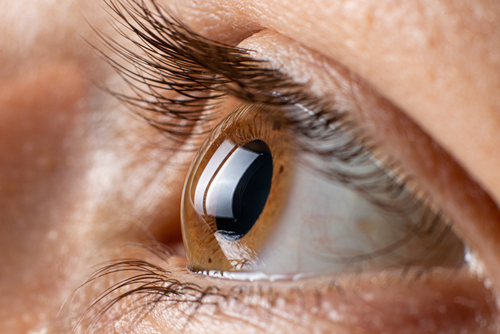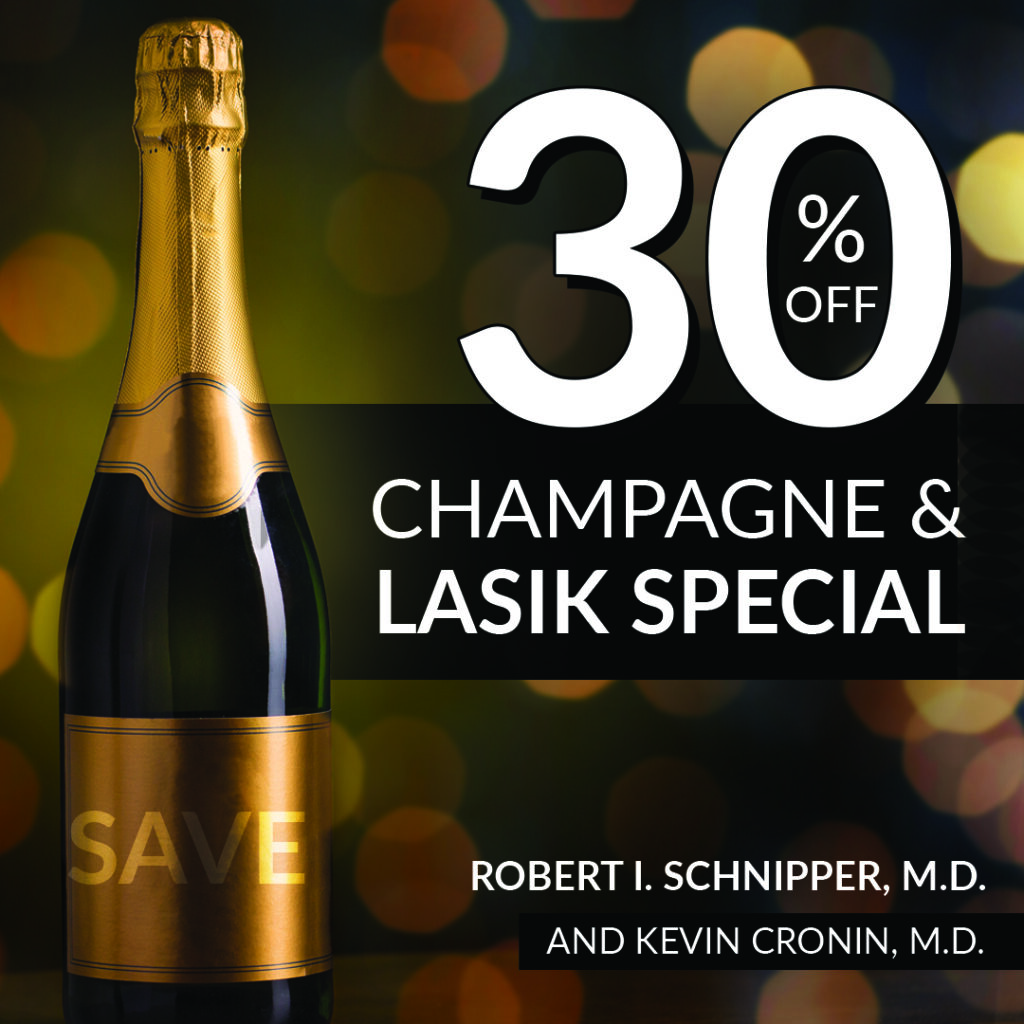Do you wish you could see without glasses or contacts? With refractive lens exchange (RLE), you can reduce your dependence on prescription lenses and say hello to a lifetime of crisp, sharp vision.
However, like other refractive procedures, not everyone is a good candidate for RLE. Keep reading to learn more about refractive lens exchange, what makes you a good candidate for the procedure, and why you should consider RLE!
What is Refractive Lens Exchange?
Refractive lens exchange (RLE) is a procedure that corrects common refractive errors, including presbyopia, astigmatism, nearsightedness, and farsightedness. RLE involves replacing your eye’s natural lens with a synthetic one called intraocular lens (IOL).

The new artificial IOL corrects your refractive error and improves your vision. After RLE, you may not need to wear glasses or contact lenses at all, or you might need them sometimes for a few tasks.
Refractive lens exchange is almost identical to cataract surgery, which also entails replacing the natural lens with an IOL. The main difference between the two is that RLE is performed to decrease or eliminate dependence on visual aids.
On the other hand, cataract surgery involves removing a cloudy lens due to cataracts. The cloudy lens is removed and replaced with a clear IOL.
The new IOL restores any vision lost to cataracts. In RLE, the new lens’s primary purpose is to improve your visual freedom.
How Does Refractive Lens Exchange Work?
RLE is an outpatient procedure that takes approximately fifteen to thirty minutes. First, you’ll receive numbing eye drops.
You might also be given medication to help you feel calm and relaxed. Your RLE surgeon will make a small incision in your eye in order to reach the lens.
Then, they’ll break up the lens into tiny pieces and remove them using gentle suction. Through the same incision, the eye surgeon will insert a foldable, artificial IOL to replace your natural lens.
Once implanted, the new lens unfolds and takes the place of the old lens. The new IOL will have an exact prescription, that is unique to your refractive error.
The incision made doesn’t need stitches. It begins self-healing almost right away.
RLE is performed on one eye at a time, typically one to two weeks apart. After your procedure, you’ll be taken to the recovery room briefly before a family member or friend drives you home.
Most patients notice a significant improvement in their vision by the next day. The final visual outcome will be realized in several weeks.
Who is a Candidate for Refractive Lens Exchange?
Your ophthalmologist will thoroughly assess your eyes to determine if RLE is right for you. You may be a good candidate for RLE if you meet the following requirements:

You’re Over the Age of 40
RLE is often the best choice for people who are over forty and experiencing new vision changes. It can correct multiple refractive errors and address age-related vision problems simultaneously.
You Have a Stable Prescription
Your prescription should remain the same for at least one to two years before having RLE. The more stable your vision is, the better the outcome after RLE.
You Have Early Onset Cataracts
RLE is often considered by patients with early onset cataracts, which, when left untreated, gradually worsen and require cataract surgery.
With RLE, you can prevent cataracts from worsening and causing vision problems and enjoy a lifetime of crystal-clear vision.
You’re Not a Candidate for LASIK or PRK
You may be eligible for RLE if you are unable to have PRK or LASIK due to corneal irregularities or other conditions. Refractive lens exchange provides very similar outcomes to LASIK and PRK and can even be a more ideal choice.
You Have Extreme Nearsightedness or Farsightedness
Refractive lens exchange can effectively fix high amounts of farsightedness and nearsightedness that other laser vision correction procedures may not adequately address.
You Have Healthy Eyes
RLE can be a great option if you have healthy eyes. You should be free from eye conditions such as uveitis, diabetic retinopathy, cataracts, age-related macular degeneration, and glaucoma.
You have Chronic Dry Eye
You may not qualify for LASIK if you have chronic dry eyes. During LASIK, corneal nerves are damaged, which reduces the amount of tears your eyes produce.
For many LASIK patients, dry eyes are a common side effect after the procedure. They’re usually temporary and resolve on their own after a while.
The symptoms can be much worse if you already had chronic dry eyes prior to LASIK. When that’s the case, RLE may be a better option.
It can provide a vision outcome that’s just as clear as LASIK.
You Have Thin Corneas
RLE can be an excellent alternative to LASIK if you don’t qualify because of thin corneas. Your corneas should be thick enough to have LASIK.
LASIK involves the removal of some corneal tissue in order to correct your refractive error. If your corneas are too thin, having LASIK may lead to complications like corneal ectasia, a gradual thinning, and bulging of the cornea.
With RLE, your cornea remains intact. The RLE surgeon replaces your natural lens with a synthetic one to fix your refractive error and improve your vision.

You Have Presbyopia
Presbyopia, or age-related farsightedness, is a normal part of aging. It occurs when your lens loses its ability to focus on up-close objects.
As you grow older, your lens becomes less flexible and unable to shift focus from distance to near. Consequently, nearby objects appear blurred.
Presbyopia typically becomes noticeable in your forties and worsens until around age sixty-five. If you have presbyopia and want to see the world without visual aids, RLE can be a good option.
Refractive lens exchange can easily correct presbyopia, allowing you to live glasses-free.
Why Should You Consider Refractive Lens Exchange?
RLE has many benefits. Here are some of the reasons why the procedure is worth it:
Freedom from Glasses or Contact Lenses
RLE corrects a wide range of refractive errors, significantly reducing or eliminating the need for glasses or contact lenses.
Prevents Cataracts
Because your natural lens is replaced with a synthetic one, you’ll never develop cataracts in the future.
Find Out If RLE is Right for You
A comprehensive eye exam is the only way to know if RLE is appropriate for you. The expert doctors at Jacksonville Eye Center will perform a thorough examination to determine if RLE can help you achieve your vision goals.
Are you ready to find out if you’re a good candidate for RLE? Schedule an appointment at Jacksonville Eye Center in Jacksonville, FL, today and get on the road to the best vision of your life!

